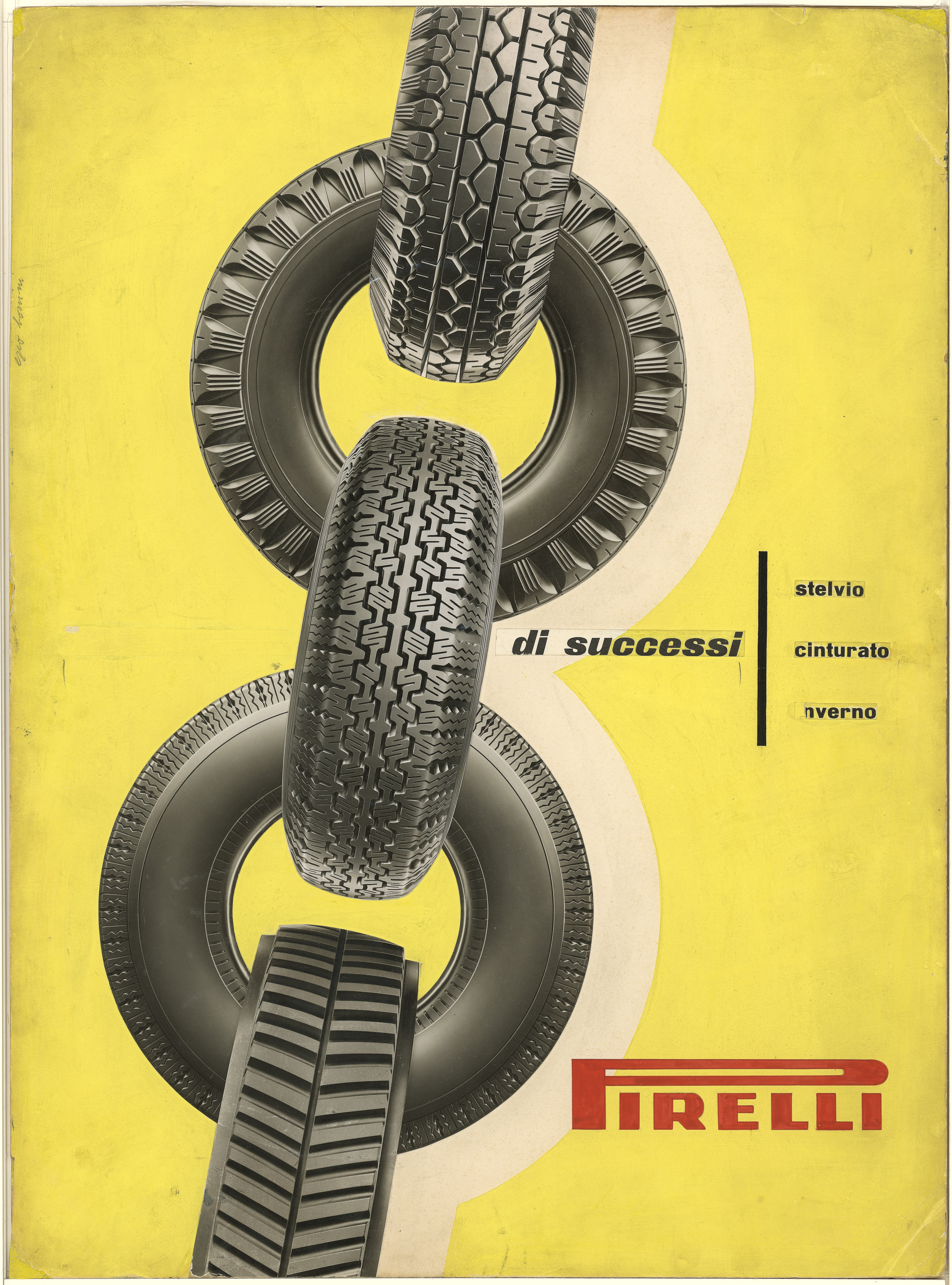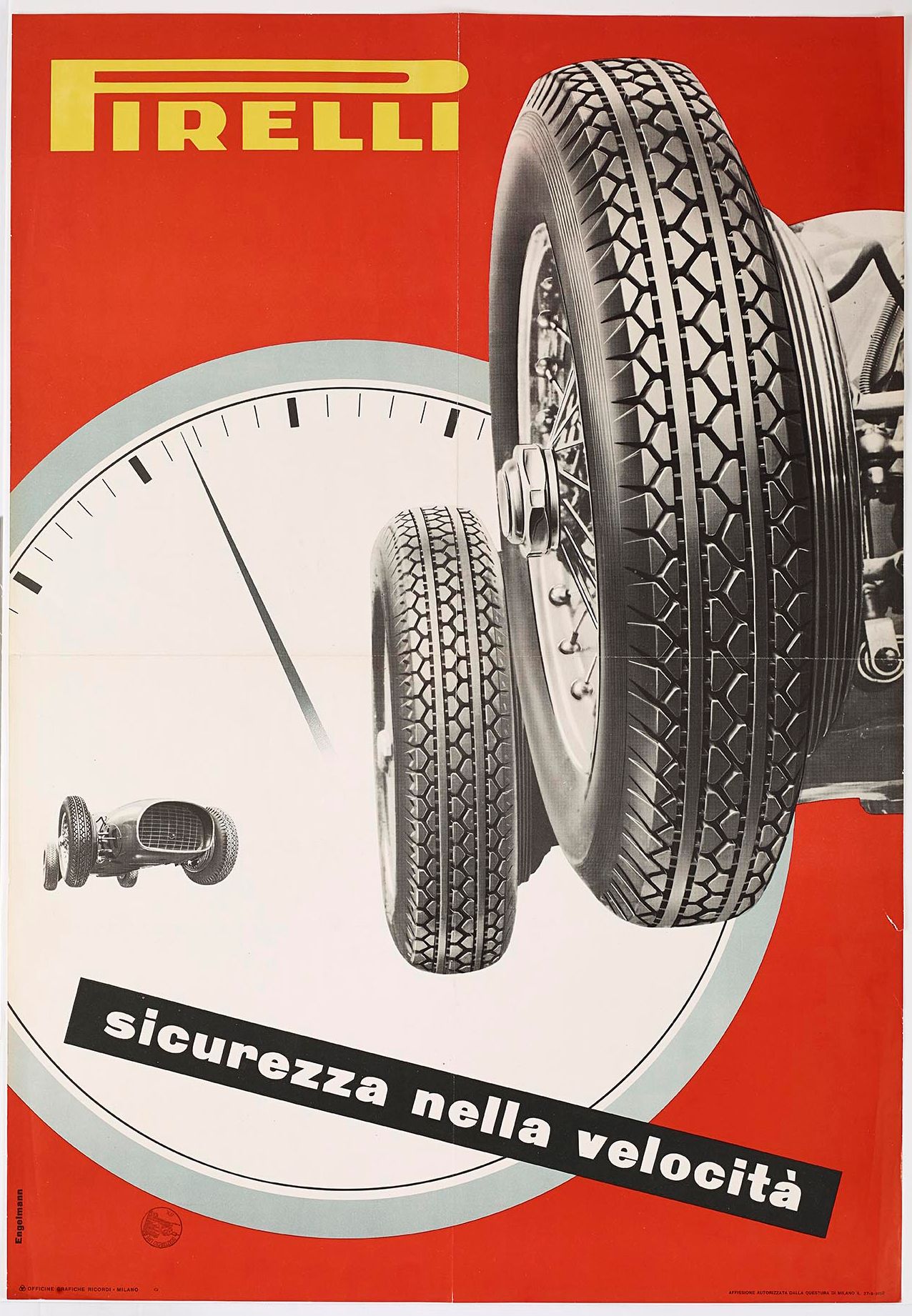Pirelli Graphics and Technology on Display at the Guggenheim Museum in Bilbao
The Pirelli Foundation is taking part in the Motion: Autos, Art, Architecture exhibition, which runs from 8 April to 18 September 2022 at the Guggenheim Museum in Bilbao. The exhibition, curated by Lord Norman Foster, Manuel Cirauqui and Lekha Hileman Waitoller, celebrates the artistic world of the automobile, retracing its history through painting, sculpture, design, architecture, photography and cinema. The display winds its way through five main themes – Beginnings, Sculptures, Popularising, Sporting, Visionaries, Americana, and Future – which form the chronological arrangement of the exhibition. About 40 automobiles are on show, together with over 300 works, including paintings and sculptures by great artists, photographs, audio-visual documents and sketchbooks, as well as models by some of the most influential architects and designers of the twentieth century. The works from the Foundation’s archives also include original sketches for historic advertisements for Pirelli tyres, dating from the 1950s and 1960s, clearly illustrating the high levels of quality and innovation that the company achieved in the field of visual communication. The graphic creations of the great masters of Italian and international design, such as Pavel Michael Engelmann, Alan Fletcher, Ezio Bonini, and Armando Testa, to name but a few, interact with the cars in the Sporting gallery. Here we see the years of the post-war economic boom, with the new technical requirements of Formula 1 racing ushering in a remarkable technological and aesthetic leap forward. This led to the expansion of the sports car market, with designs that brought together art and fashion to satisfy the dream of speed and adventure. Cars were portrayed as cult objects by artists such as Andy Warhol and by set designers such as Ken Adam. The most emblematic examples became powerful images on the silver screen, emulating those of the great Hollywood stars. Pirelli was very much a part of these profound social and cultural transformations and the graphic works of our Historical Archive, which are shown here next to a photograph of the Pirelli Tower – the company’s first headquarters, designed by the architect Gio Ponti, – show the important cultural and technological role that the company played in those years.


The Pirelli Foundation is taking part in the Motion: Autos, Art, Architecture exhibition, which runs from 8 April to 18 September 2022 at the Guggenheim Museum in Bilbao. The exhibition, curated by Lord Norman Foster, Manuel Cirauqui and Lekha Hileman Waitoller, celebrates the artistic world of the automobile, retracing its history through painting, sculpture, design, architecture, photography and cinema. The display winds its way through five main themes – Beginnings, Sculptures, Popularising, Sporting, Visionaries, Americana, and Future – which form the chronological arrangement of the exhibition. About 40 automobiles are on show, together with over 300 works, including paintings and sculptures by great artists, photographs, audio-visual documents and sketchbooks, as well as models by some of the most influential architects and designers of the twentieth century. The works from the Foundation’s archives also include original sketches for historic advertisements for Pirelli tyres, dating from the 1950s and 1960s, clearly illustrating the high levels of quality and innovation that the company achieved in the field of visual communication. The graphic creations of the great masters of Italian and international design, such as Pavel Michael Engelmann, Alan Fletcher, Ezio Bonini, and Armando Testa, to name but a few, interact with the cars in the Sporting gallery. Here we see the years of the post-war economic boom, with the new technical requirements of Formula 1 racing ushering in a remarkable technological and aesthetic leap forward. This led to the expansion of the sports car market, with designs that brought together art and fashion to satisfy the dream of speed and adventure. Cars were portrayed as cult objects by artists such as Andy Warhol and by set designers such as Ken Adam. The most emblematic examples became powerful images on the silver screen, emulating those of the great Hollywood stars. Pirelli was very much a part of these profound social and cultural transformations and the graphic works of our Historical Archive, which are shown here next to a photograph of the Pirelli Tower – the company’s first headquarters, designed by the architect Gio Ponti, – show the important cultural and technological role that the company played in those years.








